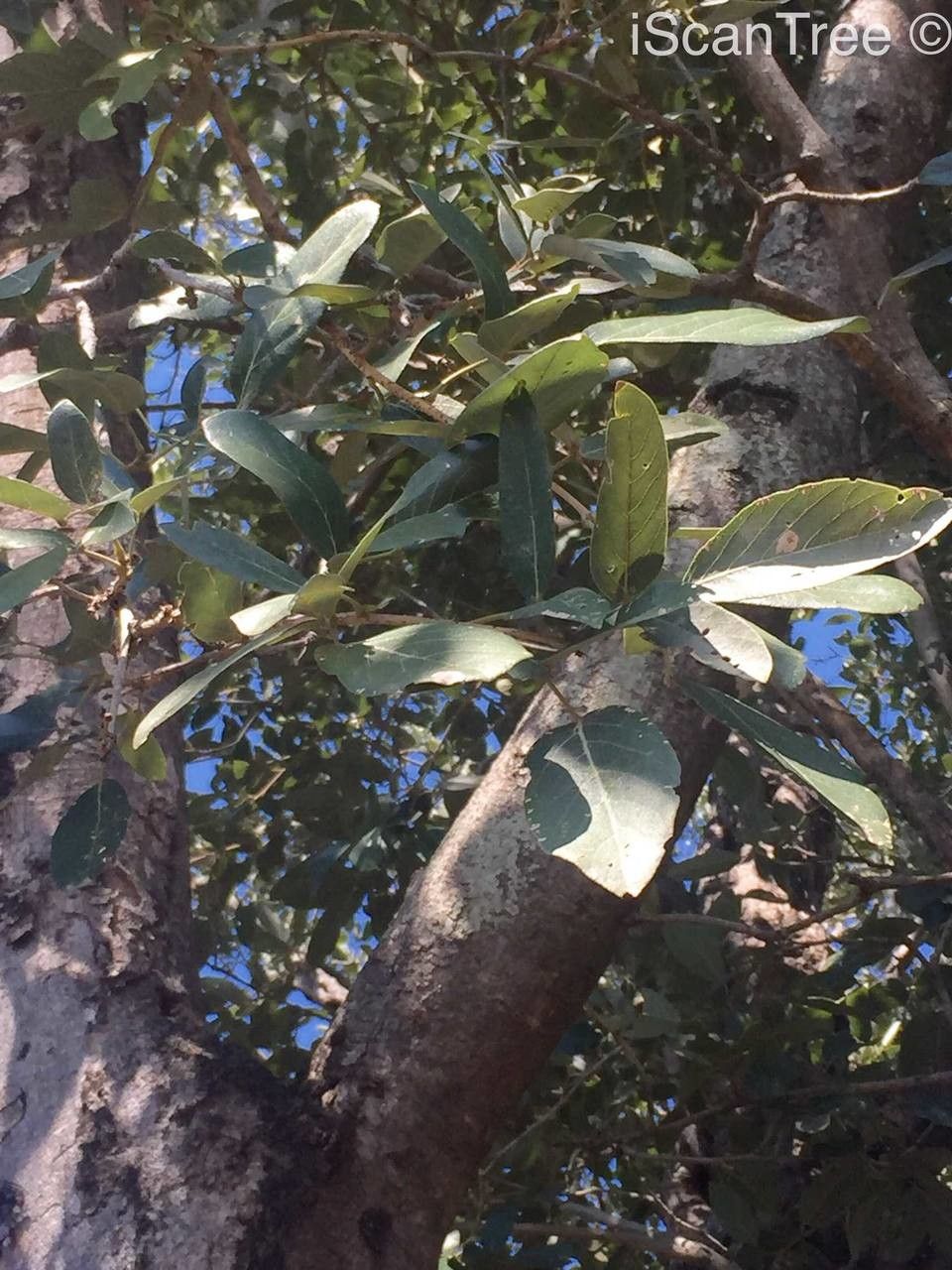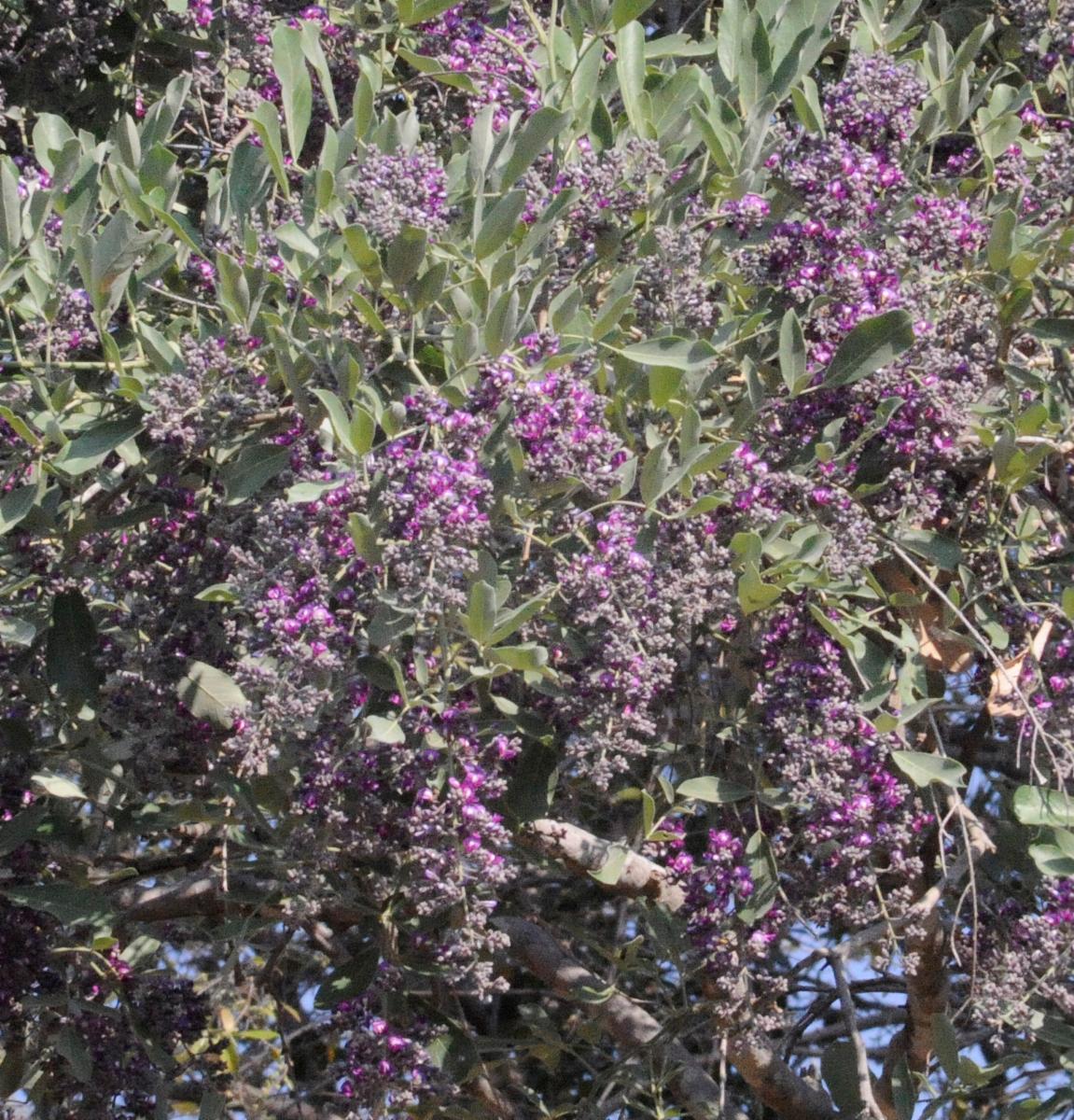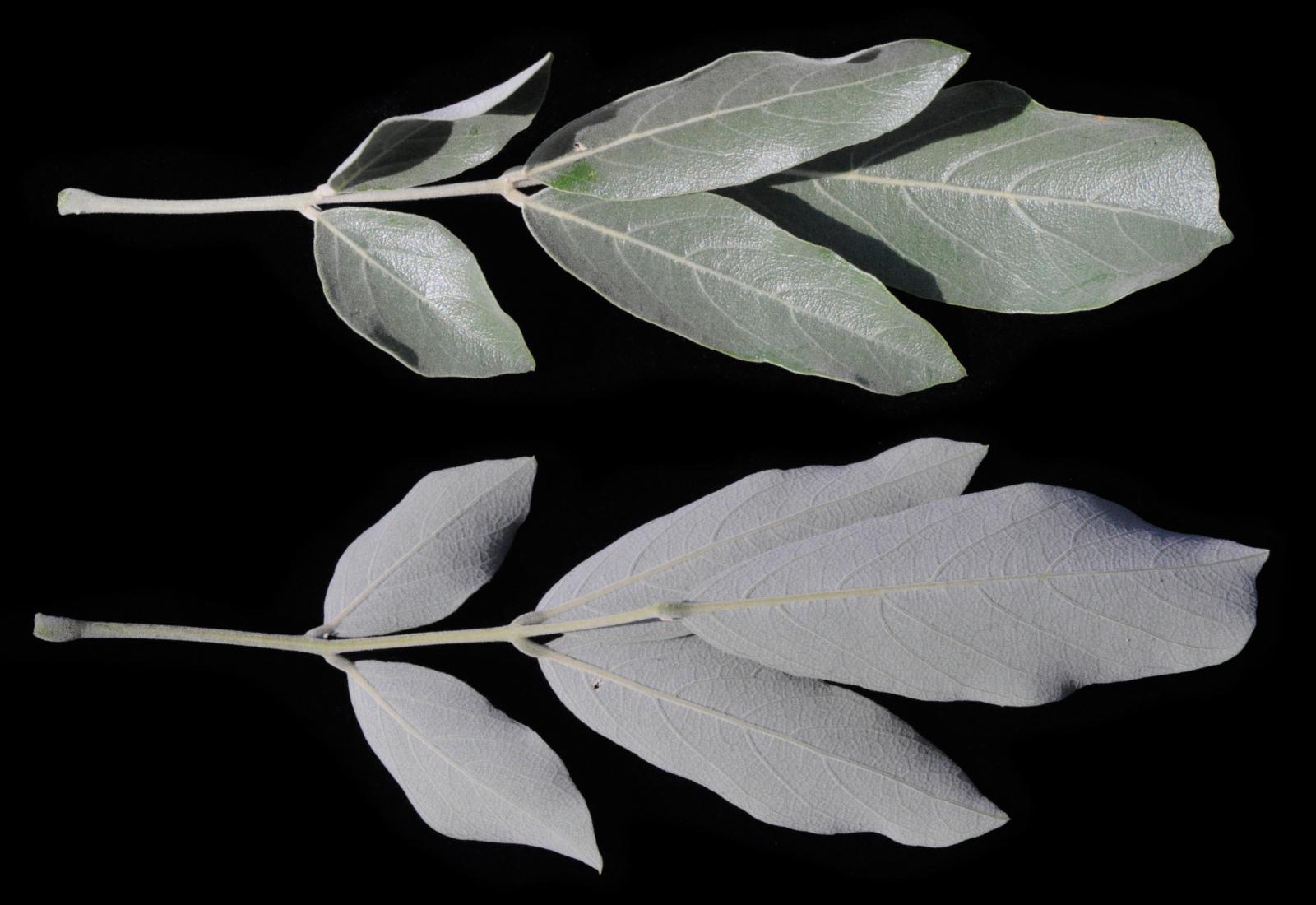River Wisteria
philenoptera violacea
Also known as: ["River Wisteria","Wild Wisteria"]
Overview
A deciduous shrub or small tree native to southern Africa, known for its attractive violet-blue flowers and hardy nature.
Benefits & Perks
["fragrant flowers","wildlife attractant (bees, butterflies, birds)","drought tolerant"]
Botanical Classification
| Phylum: | Magnoliophyta |
| Class: | Magnoliopsida |
| Order: | Fabales |
| Family: | Fabaceae |
| Genus: | Philenoptera |
| Botanical Name: | Philenoptera violacea |
Plant Characteristics
Basic Information
- Category: Flowers
- Suitable Location: outdoor garden in a sunny spot, or large container in a sheltered area
- Suitable For:
- Is Weed: No
- Allergenicity: low
Environmental Needs
- Climate: {"temperatureRange":"10–35°C"}
- Hardiness: {"zones":"9–11"}
- Misting: rarely required, only if ambient humidity is very low
- Drainage: Fast-draining to prevent waterlogging.
- Soil Type: Well-draining, loamy soil with added organic matter; cactus or succulent mix is ideal.
Maintenance Level
- Maintenance Level: moderate
- Toughness Level: moderate
- Pruning Frequency: Annually in late winter or early spring before new growth begins.
- Pruning Intensity: Moderate; remove up to one-third of old growth to rejuvenate the plant.
Care Details
Ideal Sunlight Coverage:
Full sun to partial shade; 6–8 hours of direct sunlight daily, with some afternoon shade in hot climates.
Sunlight Tolerance Tips:
Acclimate gradually to intense sunlight; protect from harsh midday sun; adjust placement based on seasonal light changes.
Care Requirements
Care Difficulty
moderatemoderate
Sunlight
full sun to partial shade
Rotate plant for even light exposure; use sheer curtains to filter intense sun; monitor for sunburn signs.
Watering
every 7–10 days during active growth, reduce in winter
Water thoroughly but infrequently; ensure soil dries between waterings; avoid overwatering, especially in winter.
Soil
well-draining, sandy loam with some organic matter
pH: Slightly acidic to neutral (pH 6.0–7.0).
Use a mix with good drainage; avoid heavy clay soils; top-dress with compost annually.
Temperature
Prefers warm temperatures (65–85°F or 18–29°C); tolerates mild frosts but thrives in heat.
Protect from frost; ensure good air circulation; adjust watering with temperature changes.
Fertilizing
every 4–6 weeks during growing season, none in winter
Fertilize only when actively growing; flush soil occasionally to prevent salt buildup; use a balanced formula.
Propagation
Methods
Stem cuttings or seed; stem cuttings are more common for home growers.
Step-by-Step Propagation Guide
- Take a 4–6 inch cutting.
- Remove lower leaves.
- Apply rooting hormone.
- Plant in medium.
- Maintain humidity.
Best Time: Spring or early summer when the plant is actively growing.
Environment
Warm (70–75°F or 21–24°C), high humidity (70–80%), and bright indirect light.
Medium
Well-draining mix of perlite and peat moss or cactus potting mix.
Hormone
Rooting hormone is recommended to improve success rates.
Timeline
Roots develop in 4–6 weeks; new growth appears in 2–3 months.
Tools Needed
Pruning shears, rooting hormone, small pots, plastic wrap or propagator.
Quick Tips
Use healthy, non-flowering stems; keep medium consistently moist; provide bottom heat if possible.
Pruning & Repotting
Pruning Guide
Method
Selective thinning and heading back to shape the plant and improve air circulation.
Pruning Plan
Prune to maintain shape, encourage bushiness, and remove dead or overgrown stems.
Tools
Pruning shears, sterilizing solution, gloves.
Checklist
Sterilize tools; prune dead/damaged stems; shape the plant; clean up debris.
Repotting Guide
Best Season
Spring, before the active growing season begins.
Pot Size
One size larger pot (e.g., +2 inches in diameter); ensure good drainage.
Method
Remove plant gently; trim roots if needed; place in a slightly larger pot with fresh soil; water lightly.
Suggestions
Repot every 2–3 years or when roots fill the pot; necessary to refresh soil and provide space.
Checklist
Check root bound status; prepare new pot; trim roots; use fresh soil; water sparingly post-repotting.
Advanced Care Tips
Watering Mastery
Watering Checklist
Check soil moisture; water deeply; ensure drainage; adjust for season.
How to Apply Water Properly
Water at the base of the plant, ensuring moisture reaches the root zone; allow excess water to drain away; water in the morning to reduce evaporation and fungal risk.
Watering Schedule Tips
Water deeply once the top inch of soil is dry; reduce frequency in winter to prevent root rot.
Soil Improvement
Add perlite or coarse sand for drainage; incorporate compost for fertility; ensure aeration with chunky materials.
Temperature Stress Management
Signs of Temperature Issues
Yellowing leaves (cold stress), leaf drop (heat stress), stunted growth (extremes).
Cold Stress
Slows growth, causes leaf discoloration, and may lead to root damage in prolonged cold.
Solution: Move to a warmer location; provide frost protection; reduce watering in cold periods.
Hot Stress
Wilting, leaf scorch, and reduced flowering due to excessive heat and dryness.
Solution: Provide shade during peak heat; increase humidity; water more frequently but avoid waterlogging.
Fertilizing Guide
Fertilizing Checklist
Check growth phase; dilute fertilizer; apply to moist soil; avoid contact with roots.
Fertilizing Method
Use a balanced liquid fertilizer diluted to half strength every 4–6 weeks during growing season (spring/summer); avoid fertilizing in winter.
Common Problems & Solutions
Toxicity Warning
Cats
Slightly ToxicCats that ingest Philenoptera violacea seeds or roots may experience mild gastrointestinal symptoms. The toxic effects are generally not severe but can cause discomfort and distress.
⚠️ Symptoms:
🌿 Toxic Parts:
⚡ Toxic If:
if eaten
Dogs
Slightly ToxicIn dogs, ingestion of Philenoptera violacea seeds and roots can lead to mild gastrointestinal upset. The toxic compounds may cause irritation to the digestive tract, resulting in discomfort but typically not severe illness.
⚠️ Symptoms:
🌿 Toxic Parts:
⚡ Toxic If:
if eaten
Humans
Slightly ToxicPhilenoptera violacea contains compounds that can cause mild gastrointestinal distress when ingested. The toxic effects are generally not life-threatening but can lead to discomfort. The physiological impact is primarily localized to the digestive system.
⚠️ Symptoms:
🌿 Toxic Parts:
⚡ Toxic If:
if eaten
Frequently Asked Questions
Q: Does Philenoptera violacea attract wildlife?
A: Yes, it attracts bees, butterflies, and birds with its fragrant flowers.
Q: Is this plant drought-tolerant?
A: Yes, it is moderately drought-tolerant once established.
Q: What are the common problems with this plant?
A: Common issues include leaf spots and wilting.
Quick Reference
| Family: | Fabaceae |
| Care: | moderate |
| Light: | full sun to partial shade |
| Water: | every 7–10 days during activ |
Get Expert Care Tips
Download the Plantious app for personalized care reminders and plant identification!
Google Play App Store








